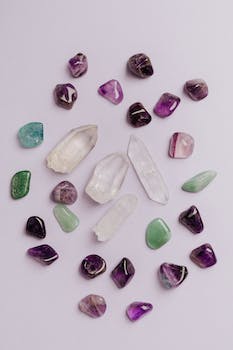Exploring cross-industry collaborations can be a valuable strategy for design stores looking to expand their offerings and reach new customers. By partnering with businesses from different industries, design stores can tap into new markets, gain fresh perspectives, and create unique products or experiences. This article will explore the benefits of cross-industry collaborations for design stores and provide insights on how to successfully navigate and leverage these partnerships.
The Benefits of Cross-Industry Collaborations in Design
In the ever-evolving world of design, staying ahead of the curve is crucial for success. One way to achieve this is through cross-industry collaborations. By partnering with businesses from different sectors, design stores can unlock a myriad of benefits that can elevate their brand and drive growth.
First and foremost, cross-industry collaborations provide a unique opportunity for design stores to tap into new markets. By joining forces with businesses outside of their industry, design stores can reach a wider audience and attract customers who may not have been previously aware of their brand. For example, a design store specializing in home decor could collaborate with a fashion retailer to create a limited-edition collection of clothing and accessories. This collaboration would not only introduce the design store to a new customer base but also allow them to showcase their design expertise in a different context.
Furthermore, cross-industry collaborations can spark innovation and creativity. When individuals from different industries come together, they bring with them diverse perspectives and skill sets. This fusion of ideas can lead to the development of groundbreaking products and services that would not have been possible otherwise. For instance, a design store could partner with a technology company to create smart home devices that seamlessly blend functionality and aesthetics. This collaboration would not only push the boundaries of design but also provide customers with innovative solutions for their homes.
Collaborating with businesses from different industries also allows design stores to leverage their partners’ expertise and resources. For example, a design store could team up with a manufacturing company to streamline their production process and improve the quality of their products. By tapping into the manufacturing company’s knowledge and infrastructure, the design store can enhance their operations and deliver superior products to their customers. This collaboration not only benefits the design store but also strengthens the relationship between the two businesses, creating a win-win situation.
Moreover, cross-industry collaborations can enhance a design store’s brand image and reputation. By associating themselves with reputable businesses from other industries, design stores can elevate their perceived value and credibility. For instance, a design store could collaborate with a luxury hotel chain to curate exclusive in-room experiences for guests. This partnership would not only position the design store as a trusted authority in the industry but also provide them with exposure to a high-end clientele. This association with luxury and exclusivity can significantly enhance the design store’s brand image and attract discerning customers.
In conclusion, cross-industry collaborations offer numerous benefits for design stores. From expanding their reach to fostering innovation and leveraging resources, these collaborations can propel design stores to new heights of success. By embracing partnerships with businesses from different sectors, design stores can tap into new markets, spark creativity, enhance their operations, and elevate their brand image. In a rapidly changing industry, cross-industry collaborations are a powerful tool that design stores should consider to stay ahead of the competition and thrive in the marketplace.
How to Identify Potential Cross-Industry Collaborators for Your Design Store
In today’s competitive business landscape, finding innovative ways to stand out from the crowd is crucial. One effective strategy that many design stores are adopting is cross-industry collaborations. By partnering with businesses from different industries, design stores can tap into new markets, expand their customer base, and create unique products and experiences. However, identifying potential cross-industry collaborators can be a challenging task. In this article, we will explore some strategies to help you identify the right partners for your design store.
First and foremost, it is essential to have a clear understanding of your brand and target audience. What makes your design store unique? Who are your ideal customers? By answering these questions, you can identify industries that align with your brand values and cater to a similar customer base. For example, if your design store specializes in eco-friendly products, collaborating with a sustainable fashion brand or a zero-waste grocery store could be a great fit.
Once you have identified the industries that align with your brand, it’s time to research potential collaborators within those industries. Start by looking for businesses that share similar values, aesthetics, or target markets. This could involve attending industry events, trade shows, or networking with professionals from different sectors. Additionally, online platforms and social media can be valuable resources for finding potential collaborators. Joining relevant online communities or using hashtags related to your industry can help you discover businesses that may be interested in partnering with you.
Another effective strategy is to reach out to your existing customers and ask for their input. Conduct surveys or hold focus groups to gather insights on their interests, preferences, and potential collaborations they would like to see. Your customers are a valuable source of information and can provide valuable suggestions for cross-industry collaborations that you may not have considered.
Furthermore, consider exploring local partnerships within your community. Collaborating with businesses in your area can not only strengthen your ties with the community but also create a unique selling point for your design store. For example, partnering with a local coffee shop to create a limited edition coffee mug or hosting joint events with a nearby art gallery can attract customers who appreciate supporting local businesses.
In addition to researching and reaching out to potential collaborators, it is crucial to evaluate the compatibility and feasibility of a partnership. Consider factors such as the size and reputation of the potential collaborator, their target audience, and their willingness to invest time and resources into the partnership. It is essential to ensure that both parties have a shared vision and goals for the collaboration to be successful.
Lastly, don’t be afraid to think outside the box and explore unconventional collaborations. Sometimes, the most unexpected partnerships can lead to the most exciting and innovative outcomes. For example, a design store could collaborate with a technology company to create interactive installations or partner with a food and beverage brand to design packaging for their products.
In conclusion, cross-industry collaborations can be a powerful tool for design stores to differentiate themselves and tap into new markets. By identifying potential collaborators that align with your brand values and target audience, conducting thorough research, and evaluating compatibility, you can find the right partners to create unique products and experiences. Remember to think creatively and be open to unconventional collaborations. With the right approach, cross-industry collaborations can be a game-changer for your design store.
Successful Examples of Cross-Industry Collaborations in the Design Industry
Cross-industry collaborations have become increasingly popular in the design industry, as businesses seek to leverage the strengths and expertise of other industries to create innovative and unique products. These collaborations not only allow design stores to expand their offerings but also provide an opportunity to tap into new markets and reach a wider audience. In this article, we will explore some successful examples of cross-industry collaborations in the design industry, highlighting the benefits they bring and the lessons we can learn from them.
One notable example of a successful cross-industry collaboration is the partnership between a high-end fashion brand and a furniture manufacturer. By combining their expertise in fashion and furniture design, they were able to create a line of luxury home furnishings that seamlessly blended style and functionality. This collaboration not only allowed the fashion brand to extend its brand presence into the home decor market but also provided the furniture manufacturer with a fresh and fashionable perspective on their products.
Another successful cross-industry collaboration is the partnership between a technology company and a design store. By integrating cutting-edge technology into their products, the design store was able to offer customers a unique and interactive shopping experience. For example, they developed an augmented reality app that allowed customers to virtually try out furniture and decor items in their own homes before making a purchase. This collaboration not only enhanced the customer experience but also helped the design store differentiate itself from competitors and attract tech-savvy customers.
In addition to these examples, cross-industry collaborations have also been successful in the food and beverage industry. For instance, a design store partnered with a local coffee roaster to create a limited edition line of coffee mugs. The design store provided their expertise in product design, while the coffee roaster contributed their knowledge of coffee culture and flavor profiles. This collaboration not only resulted in beautifully designed coffee mugs but also helped both businesses attract new customers. The design store was able to tap into the coffee lover market, while the coffee roaster gained exposure to design enthusiasts.
These successful examples of cross-industry collaborations in the design industry highlight the benefits that can be achieved through such partnerships. By combining the strengths and expertise of different industries, businesses can create unique and innovative products that appeal to a wider audience. These collaborations also provide an opportunity for businesses to tap into new markets and reach customers who may not have been previously aware of their brand.
However, it is important to note that cross-industry collaborations require careful planning and execution. Businesses must ensure that there is a clear alignment of values and goals between the collaborating parties. They must also establish effective communication channels and processes to ensure a smooth collaboration. Additionally, businesses should conduct thorough market research to identify potential synergies and opportunities for growth.
In conclusion, cross-industry collaborations have become a valuable strategy for design stores looking to expand their offerings and reach new customers. By partnering with businesses from different industries, design stores can leverage their strengths and expertise to create innovative and unique products. The successful examples discussed in this article demonstrate the benefits that can be achieved through such collaborations. However, it is important for businesses to approach these partnerships with careful planning and execution to ensure a successful outcome.
Tips for Navigating Cross-Industry Collaborations in Design
In today’s competitive business landscape, finding innovative ways to stand out from the crowd is crucial. One effective strategy that many design stores are adopting is cross-industry collaborations. By partnering with businesses from different industries, design stores can tap into new markets, expand their customer base, and create unique products that resonate with consumers. However, navigating cross-industry collaborations can be challenging, and it requires careful planning and execution. In this article, we will explore some tips to help design store owners successfully navigate cross-industry collaborations.
First and foremost, it is essential to identify the right partner for your collaboration. Look for businesses that share similar values and target a complementary customer base. For example, if your design store specializes in eco-friendly products, partnering with a sustainable fashion brand would be a natural fit. By aligning your values and target audience, you can ensure that the collaboration will be mutually beneficial and resonate with your customers.
Once you have identified a potential partner, it is crucial to establish clear goals and objectives for the collaboration. What do you hope to achieve through this partnership? Are you looking to create a new product line, increase brand awareness, or tap into a new market? Clearly defining your goals will help guide the collaboration and ensure that both parties are working towards a common objective.
Communication is key when it comes to cross-industry collaborations. Regular and open communication with your partner is essential to ensure that everyone is on the same page. Schedule regular meetings or conference calls to discuss progress, address any challenges, and brainstorm new ideas. By maintaining a strong line of communication, you can foster a collaborative environment and ensure that the partnership remains productive and successful.
Flexibility is another crucial aspect of navigating cross-industry collaborations. Both parties may have different ways of doing things, and it is important to be open to new ideas and approaches. Embrace the opportunity to learn from your partner’s expertise and be willing to adapt your processes if necessary. By being flexible, you can maximize the benefits of the collaboration and create innovative products or services that would not have been possible otherwise.
In addition to flexibility, it is also important to establish clear roles and responsibilities for each party involved in the collaboration. Clearly define who will be responsible for what tasks and ensure that everyone understands their role in the partnership. This will help avoid confusion and ensure that the collaboration runs smoothly.
Lastly, it is crucial to evaluate the success of the collaboration once it is completed. Did you achieve your goals? What worked well, and what could be improved for future collaborations? By conducting a thorough evaluation, you can learn from your experience and apply those lessons to future cross-industry collaborations.
In conclusion, cross-industry collaborations can be a powerful strategy for design stores to differentiate themselves and tap into new markets. By following these tips, design store owners can navigate cross-industry collaborations successfully. Remember to identify the right partner, establish clear goals, communicate effectively, be flexible, define roles and responsibilities, and evaluate the collaboration’s success. With careful planning and execution, cross-industry collaborations can be a game-changer for your design store.
Exploring New Markets through Cross-Industry Collaborations in Design
In today’s competitive business landscape, it is essential for design stores to constantly seek new opportunities to expand their customer base and increase revenue. One effective strategy that has gained popularity in recent years is cross-industry collaborations. By partnering with businesses from different industries, design stores can tap into new markets and reach a wider audience.
Cross-industry collaborations offer numerous benefits for design stores. Firstly, they provide an opportunity to leverage the strengths and expertise of other businesses. For example, a design store specializing in home decor could collaborate with a furniture manufacturer to create a unique line of products that seamlessly blend style and functionality. By combining their respective knowledge and resources, both businesses can create a product that appeals to a broader range of customers.
Furthermore, cross-industry collaborations allow design stores to tap into the existing customer base of their partners. For instance, a design store could collaborate with a high-end fashion brand to create a limited-edition collection. This collaboration not only introduces the design store to the fashion brand’s loyal customers but also enhances the perceived value of the products. Customers who are already familiar with the fashion brand may be more inclined to purchase items from the design store, as they associate it with quality and exclusivity.
Another advantage of cross-industry collaborations is the opportunity to gain exposure in new markets. By partnering with businesses from different industries, design stores can reach customers who may not have been aware of their brand otherwise. For example, a design store specializing in handmade jewelry could collaborate with a luxury hotel to create a line of exclusive accessories for their guests. This collaboration not only introduces the design store to a new audience but also positions it as a brand associated with luxury and sophistication.
However, it is important for design stores to carefully select their collaboration partners. The businesses should share a similar target audience and brand values to ensure a seamless integration of their products or services. For example, a design store that focuses on sustainable and eco-friendly products should collaborate with businesses that share the same commitment to environmental responsibility. This alignment not only enhances the credibility of both businesses but also resonates with customers who prioritize sustainability in their purchasing decisions.
To successfully execute a cross-industry collaboration, effective communication and coordination are crucial. Both businesses must clearly define their objectives, roles, and responsibilities from the outset. Regular meetings and open lines of communication are essential to ensure that the collaboration stays on track and any issues or challenges are addressed promptly. By working together closely, both businesses can maximize the potential of the collaboration and achieve their desired outcomes.
In conclusion, cross-industry collaborations offer design stores a valuable opportunity to explore new markets and expand their customer base. By partnering with businesses from different industries, design stores can leverage their strengths, tap into existing customer bases, and gain exposure in new markets. However, it is important to carefully select collaboration partners that align with the design store’s target audience and brand values. Effective communication and coordination are also essential for the success of the collaboration. With careful planning and execution, cross-industry collaborations can be a powerful tool for design stores to achieve growth and success in today’s competitive business environment.
In conclusion, exploring cross-industry collaborations for your design store can be a beneficial strategy to enhance creativity, expand customer base, and drive business growth. By partnering with businesses from different industries, you can tap into new markets, gain fresh perspectives, and create unique products or experiences that set your store apart. Collaborations also provide opportunities for knowledge sharing, resource pooling, and mutual promotion, ultimately leading to increased brand visibility and customer engagement. Embracing cross-industry collaborations can be a valuable approach for design stores looking to stay competitive and thrive in today’s dynamic market.



